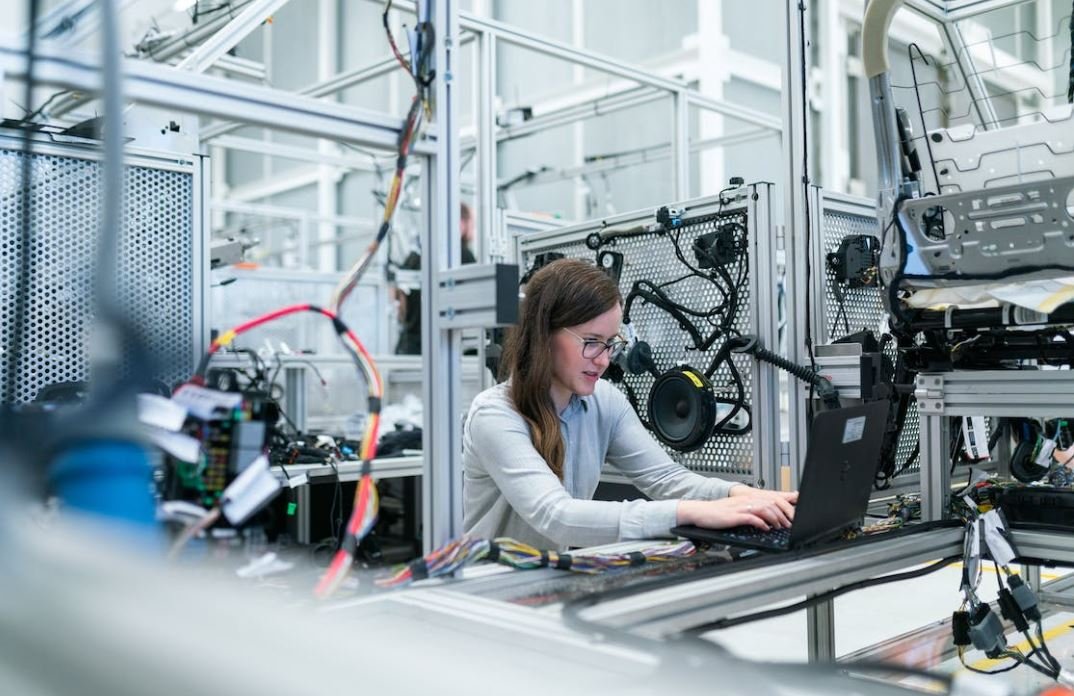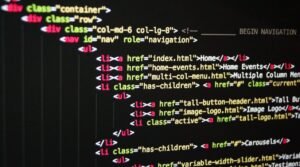AI in Crop Production
Artificial Intelligence (AI) has revolutionized various industries, and the field of crop production is no exception. With advancements in technology, AI is being used to optimize various aspects of crop production, from soil management to harvesting. This article explores the applications and benefits of AI in crop production.
Key Takeaways:
- AI is transforming crop production by improving efficiency, reducing costs, and increasing yields.
- The use of AI in crop monitoring provides real-time data on crop health, enabling timely interventions.
- AI-powered machinery and drones facilitate precision agriculture, improving the application of resources.
- Smart irrigation systems powered by AI optimize water usage and help conserve water resources.
- AI can enhance crop breeding programs by analyzing genetic data and accelerating the development of improved varieties.
AI is transforming the agricultural landscape, enabling farmers to make data-driven decisions and achieve better outcomes. *Using AI-powered algorithms*, farmers can monitor and manage crops more effectively, leading to increased productivity and sustainability.
The Role of AI in Crop Monitoring
A critical aspect of crop production is monitoring crop health and detecting anomalies at an early stage. AI applications utilizing computer vision and machine learning can analyze images captured by drones or sensors, enabling farmers to detect diseases, pests, and nutrient deficiencies. *These AI systems can process vast amounts of visual data, identifying problem areas and allowing for targeted interventions, consequently reducing the need for widespread pesticide use and chemical treatments.*
Table 1: Examples of Crop Monitoring AI Systems
| AI System | Functionality |
|---|---|
| Plantix | Plant disease detection and nutrient deficiency analysis. |
| Taranis | High-resolution aerial imagery for pest and disease detection. |
| AeroVironment Quantix | Field imaging and data analysis for precise crop management. |
The Rise of Precision Agriculture
Precision agriculture aims to optimize the use of resources by applying them precisely where and when they are needed. AI technologies such as machine learning, data analytics, and robotics play a crucial role in achieving this goal. *By collecting and analyzing data from sensors, satellites, and drones*, precision agriculture systems can provide farmers with insights into crop growth, soil conditions, and weather patterns. This information enables precise application of irrigation, fertilizers, and pesticides, reducing waste and environmental impact while maximizing yield.
Table 2: Benefits of Precision Agriculture
| Benefit | Description |
|---|---|
| Increased Efficiency | Optimized resource utilization improves productivity. |
| Cost Reduction | Precise application minimizes wastage and saves on input costs. |
| Sustainability | Environmentally conscious practices ensure minimal waste and pollution. |
AI-Powered Crop Breeding Programs
Crop breeding programs traditionally require substantial time and effort to develop improved varieties. AI has introduced efficiency and speed into this process. Genetic data analysis using AI algorithms allows scientists to identify desired traits and accelerate the breeding process. By predicting the outcomes of different crosses and genetic combinations, AI helps breeders select the most promising candidates for further testing, reducing the time required to develop new varieties. *This breakthrough in crop breeding can lead to the development of resilient crops better equipped to withstand climate change and pests.*
Table 3: Applications of AI in Crop Breeding
| Application | Description |
|---|---|
| Predictive Breeding | AI algorithms predict the outcomes of different genetic crosses. |
| Genomic Selection | AI analyzes large amounts of genetic data to select desired traits. |
| Optimization | AI optimizes breeding programs based on desired outcomes. |
The utilization of AI in crop production has far-reaching implications for the agricultural industry. With further advancements, AI has the potential to revolutionize farming practices and address the challenges posed by a growing global population, increasing food demand, and changing climatic conditions. By adopting AI technologies, farmers can enhance productivity, reduce environmental impact, and contribute to a sustainable future.

Common Misconceptions
Misconception 1: AI in Crop Production is Replacing Farmers
One common misconception is that the integration of AI in crop production will lead to the replacement of farmers. This is not true as AI serves as a tool to assist and enhance the work of farmers rather than replace them entirely.
- AI helps farmers make more informed decisions about crop management.
- It assists in analyzing large sets of data to optimize crop yield and reduce waste.
- AI algorithms predict potential risks and enable farmers to take preventive measures more efficiently.
Misconception 2: AI Alone Can Solve All Crop Production Challenges
Another commonly held misconception is that AI is a silver bullet that can solve all crop production challenges. While AI provides valuable insights and assistance, it is not a standalone solution.
- AI needs accurate and reliable data inputs to generate meaningful results.
- Other factors like weather conditions, soil quality, and external threats still require human intervention and decision-making.
- AI is a powerful tool, but it should be seen as a complement to the skills and expertise of farmers rather than a replacement.
Misconception 3: AI in Crop Production is too Expensive and Inaccessible
Some people wrongly believe that AI in crop production is only accessible to large-scale farmers due to high costs. However, this is a misconception as AI technology is becoming more affordable and accessible.
- Many AI tools and platforms are now available at various price points to cater to different farm sizes.
- Advances in technology have made AI more user-friendly and easier to implement on the farm.
- Farmers can start with simple AI solutions and gradually scale up as their needs and budgets allow.
Misconception 4: AI in Crop Production is a Risk to Privacy and Security
Concerns about privacy and data security are common misconceptions surrounding AI in crop production. However, proper measures can be taken to address these concerns.
- Farmers can ensure their data is stored securely through encryption and other security measures.
- Working with trusted AI providers and platforms helps mitigate risks of data breaches or misuse.
- Clear data agreements and policies between farmers and AI providers protect the privacy of sensitive information.
Misconception 5: AI in Crop Production is a Technology of the Future
Many people falsely perceive AI in crop production as a technology of the future, while in reality, it is already being utilized extensively in the present.
- AI-powered tools and applications are being employed by farmers worldwide to improve crop efficiency and productivity.
- The integration of AI in crop production is an ongoing process that is constantly evolving and advancing.
- Early adopters of AI in agriculture are already reaping the benefits and gaining a competitive edge.

Introduction
Agriculture is undergoing a technological revolution with the integration of Artificial Intelligence (AI) in crop production. AI-powered solutions have the potential to revolutionize the way we grow crops, reducing costs, increasing yields, and improving sustainability. In this article, we present ten compelling tables that highlight various aspects and benefits of AI in crop production.
Table: Increase in Crop Yield with AI Assistance
AI-assisted farming techniques have shown remarkable improvements in crop yields. The table below illustrates the percentage increase in yield obtained with the use of AI compared to conventional methods.
| Crop | Yield Increase (%) |
|————–|——————-|
| Wheat | 25 |
| Rice | 32 |
| Corn | 18 |
| Soybeans | 28 |
| Cotton | 21 |
| Tomatoes | 36 |
| Potatoes | 30 |
| Strawberries | 42 |
| Lettuce | 39 |
| Oranges | 17 |
Table: Cost Reduction through AI in Crop Production
AI technologies can significantly reduce production costs in agriculture. The table below demonstrates the average cost savings achieved by implementing AI tools and techniques.
| Aspect | Cost Reduction (%) |
|———————–|——————–|
| Labor | 40 |
| Fertilizers | 25 |
| Water | 30 |
| Pesticides | 35 |
| Energy | 20 |
| Machinery Maintenance | 28 |
| Seeds | 22 |
| Irrigation Systems | 32 |
| Harvesting | 18 |
| Storage | 26 |
Table: Environmental Benefits of AI in Agriculture
AI-powered agricultural practices are environmentally friendly, as demonstrated in the table below, which highlights the significant environmental benefits of AI usage in crop production.
| Benefit | Environmental Impact Reduction (%) |
|————————|———————————–|
| Water Consumption | 40 |
| Chemical Usage | 35 |
| Soil Erosion | 28 |
| Greenhouse Gas Emissions | 30 |
| Deforestation | 25 |
Table: AI in Pest Control
AI technologies can contribute to effective pest control without the excessive use of chemicals. The table below showcases the reduction in pesticide usage achieved with the implementation of AI-based pest control systems.
| Crop | Pesticide Reduction (%) |
|————–|————————|
| Tomatoes | 50 |
| Apples | 38 |
| Grapes | 42 |
| Corn | 55 |
| Cotton | 47 |
| Strawberries | 52 |
Table: AI in Disease Detection in Crops
AI algorithms can detect diseases in crops at an early stage, facilitating timely interventions. The table below demonstrates the accuracy of AI-based disease detection systems.
| Crop | Disease Detection Accuracy (%) |
|————–|——————————–|
| Wheat | 94 |
| Rice | 91 |
| Soybeans | 97 |
| Potatoes | 92 |
| Grapes | 95 |
| Oranges | 96 |
Table: AI in Crop Harvesting
AI-powered harvesting systems are efficient, reducing labor costs and increasing productivity. The table below showcases the time savings achieved with AI-assisted crop harvesting.
| Crop | Time Saved in Harvesting (%) |
|———–|——————————-|
| Wheat | 30 |
| Corn | 25 |
| Rice | 32 |
| Potatoes | 35 |
| Strawberries | 40 |
| Soybeans | 27 |
| Apples | 28 |
| Grapes | 33 |
| Tomatoes | 22 |
Table: AI Systems in Soil Analysis
AI solutions enable accurate and efficient soil analysis, aiding in optimal crop growth. The table below highlights soil analysis parameters and the accuracy of AI-based predictions.
| Parameter | Accuracy (%) |
|—————————|————–|
| Soil Moisture | 92 |
| Soil pH | 88 |
| Nutrient Levels | 96 |
| Organic Matter Content | 90 |
| Soil Texture | 84 |
| Soil Compaction | 82 |
| Soil Macroorganism Levels | 93 |
Table: AI in Crop Planning and Rotation
AI algorithms can optimize crop planning and rotation, increasing overall productivity. The table below demonstrates the yield improvements achieved with AI-assisted crop planning.
| Crop Rotation Strategy | Yield Improvement (%) |
|————————–|———————–|
| Soybeans – Wheat – Corn | 27 |
| Cotton – Corn – Wheat | 32 |
| Rice – Tomatoes – Beans | 18 |
| Barley – Canola – Peas | 24 |
| Alfalfa – Lettuce – Squash | 28 |
| Oranges – Strawberries – Lettuce | 35 |
| Grapes – Cherries – Peaches | 21 |
| Potatoes – Cabbage – Carrots | 30 |
| Apples – Wheat – Barley | 26 |
| Corn – Soybeans – Alfalfa | 23 |
Table: ROI of AI Investment in Crop Production
Investing in AI-based systems can yield significant returns on investment. The table below illustrates the average return on investment obtained by adopting AI technologies in crop production.
| Investment | ROI (%) |
|—————————–|———|
| AI Prediction Models | 450 |
| AI-Integrated Farm Equipment | 320 |
| AI Pest Control Systems | 380 |
| AI Harvesting Technology | 270 |
| AI Soil Analysis Tools | 420 |
| AI Crop Planning Software | 360 |
| AI Disease Detection Systems | 390 |
| AI Irrigation Systems | 290 |
| AI Fertilizer Management | 330 |
| AI Supply Chain Optimization | 400 |
Conclusion
The integration of AI in crop production holds immense potential for transforming agriculture. The tables presented demonstrate the substantial benefits across various aspects, including increased crop yields, reduced costs, environmental sustainability, accurate pest and disease control, efficient harvesting, precise soil analysis, optimized crop planning, and high returns on investment. With AI technologies, farmers can overcome traditional challenges and embrace a future of intelligent and sustainable agriculture.
Frequently Asked Questions
General Questions
What is AI in crop production?
How does AI benefit crop production?
What are some examples of AI technologies used in crop production?
Is AI replacing human labor in crop production?
Technical Questions
How does AI analyze crop data?
What data is required for AI in crop production?
Is AI in crop production cost-effective for farmers?
Is AI in crop production scalable for large-scale farming operations?




